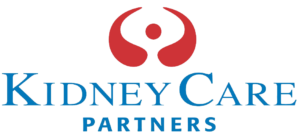KCP Releases ‘Blueprint’ for Improving Kidney Care Quality
March 4, 2014
Published by Nephrology News & Issues
Mark E. Neumann
March 4, 2014
A new initiative developed by Kidney Care Partners calls for renewed focus on improving outcomes in the kidney disease population, based on goals that include cutting down on hospitalizations, improving health-related quality of life and patient experience with care, and increasing patient survival.
KCP, a coalition of patient advocates, dialysis professionals, care providers, researchers and manufacturers, first gathered in March of last year to begin formulating the initiative. Continuing discussions on the project culminated in the final report, called the Strategic Blueprint for Advancing Kidney Care Quality.
More influence on developing quality measures that improve outcomes KCP’s effort is aimed at giving the renal community more influence in creating quality performance measures for the dialysis community.
“Medicare’s ESRD Quality Incentive Program (QIP) has created a foundation for quality improvements through the development of a core set of quality metrics,” said Edward Jones, MD, KCP chair. “But we must look beyond the QIP and its measures to drive systematic and rapid improvement. We must ask ourselves, ‘What are the right quality metrics?’ We must identify the most effective clinical practices that lead to positive outcomes.”
The report also mentions the need for the renal community to have more influence on the development of quality measures. “KCP has supported the overall intent of the QIP, which includes both transparency and payment components. KCP believes improving it in four areas—the measure development process, measure harmonization, inclusion of arteriovenous grafts in the measurement program, and careful deployment and improvement of the [In-Center Consumer Assessment of Healthcare Providers and Systems]—can make a marked difference to achieving the four goals.”
How it works
The blueprint proposes to direct change through nine “domains” for kidney care quality: care coordination, disease management, infrastructure, palliative and end-of-life care, patient engagement and education, patient satisfaction and experience with care, pediatric-specific issues, quality of life, and safety. It also identifies 32 “strategic opportunities” to improve quality. They include:
- Addressing validity concerns about CROWNWeb data
- Explicitly include AV grafts in the QIP’s current performance measure strategy, not just AV fistulas and central venous catheters
- Use ICH-CAHPS as an outcome measure only; modify the survey so its results are more timely and actionable, as well as one that assesses the experience of all dialysis patients, not just those receiving in-center treatments
- Focus on increasing physician knowledge about and comfort with discussing all dialysis modality options, and educating patients so they can be involved in shared decision-making to make informed choices
- Address fluid management by emphasizing evidence-based best practices related to extracellular volume monitoring and intensified dialysis regimens
- Develop and disseminate standardized protocols, checklists, and communication tools (e.g., on hospital admission, on discharge from a hospital to the dialysis facility or to a skilled nursing facility, related to medication reconciliation, access plan, etc.).
- Systematically adopt the Centers for Disease Control and Prevention’s protocols, audit tools, and checklists to reduce health care-associated infections
- Systematically assess and identify best practices for approaches to address depression
- Increase awareness and understanding of the benefits and importance of palliative and hospice services among health care professionals to ensure appropriate and timely referrals.
Other opportunities identified in the report included directing more research on bone mineral metabolism, fluid management, sudden death, and reducing rehospitalizations. The report also proposed the idea of giving dialysis providers incentive payments under the QIP, consistent with other value-based purchasing programs for other health care sectors, to improve quality.
The next step will be to prioritize the domains, Jones said. Work groups composed of clinical and methodology experts will then develop measures within the specific domains, which would work toward the blueprint’s four goals. Once KCP prioritizes the top two domains, it will then work to develop two measures within each of those two categories as a start.
The blueprint will be presented in Baltimore later this week at the second annual gathering of dialysis provider CMOs from around the country (see NN&I’s series of papers written by this group on clinical issues impacting quality) and be the subject of a webinar on World Kidney Day on March 13.
For a copy of the blueprint, click here.
See the original article here.
